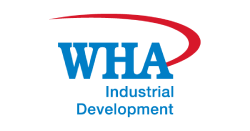Articles
EEC: The New Revolutionary Dimension of Thai Industries
08/11/2017
By Jareeporn Jarukornsakul – Group CEO, WHA Corporation PCL
“The move to enact the Eastern Economic Corridor law will drive long-term development.”
The government’s intensive efforts to promote the Eastern Economic Corridor (EEC) project, with a budget of 1.5 trillion Baht, reflects that Thailand’s industry is at a critical juncture once again. This investment covers major infrastructure developments in Rayong, Chonburi and Chachoengsao provinces over the next 5 years (2017-2021).
Many people refer to the EEC as a “springboard” of Thailand, but I see it as a ‘skyrocket’ which will boost Thailand into becoming a ‘leader’ in ASEAN.
Thirty years ago, the Eastern Seaboard project drove the country’s transition from an agricultural society to an industrial society. The transformation resulted in backbone industries from petro chemicals, electronics, to automotive and parts, which enabled Thailand to become a leading automotive manufacturer and exporter in Southeast Asia.
However, the long discontinuation of investments for mega projects, the lack of workforce development, and no new privileges for investors resulted in a loss of investment opportunities and competitiveness in the global stage.
As global industrial trends move towards Industry 4.0, Thailand inevitably faces the challenge of jumping into the new competition.
The interesting point is that the government seems to be on the right track by investing in EEC’s New S-Curve model.
The aerospace industry is one of the highlighted industries, leveraging from higher air traffic growth, low-cost airline business growth and a rise of purchasing power in Asia - factors that help boost air travel. About one-third of global aircraft orders is expected to come from this region.
Many global aerospace players agree that Thailand has a great potential of being an aerospace hub, thanks to its strategic location in Southeast Asia. However, Thailand must strengthen its capacity to go beyond just being a pass-through country.
Today, U-Tapao Airport International Airport is being developed to serve as the “aircraft industrial hub” with the aim to welcome millions of passengers a year in the future. This development will also reinforce a wide range of industries in an integrated manner, including the manufacturing of aircraft parts and an aviation training center, a public-private partnership project in line with the cluster development policy for the aerospace industry in the region.
Moreover, automobile manufacturers in our industrial estates can evolve further into electric vehicle parts production and eventually inspire the development of the aerospace industry. With full support from the government, foreign investors’ confidence will grow.
Since foreign investors are upbeat on investing in Thailand, the EEC is considered as a worthwhile opportunity for the country. All these positive signals are the result of the government’s efforts to initiate mega projects, offer tax privileges and to enact the Eastern Economic Corridor law in favor of long-term development.
Yet there are some questions to be answered. “Can all these EEC-related initiatives be achieved? “When would they start?” and “How sustainable are they?” Human resource development is also an essential factor since there will be a need to have enough skilled workers to meet growing demand in 10 industrial clusters.
After all, it is good that these projects are being done with the proactive contribution of the private sector, and not just the government, as in the past.
Everyone agrees that through our synergy, we will be able to further develop new industries to build a sustainable future for the nation.

